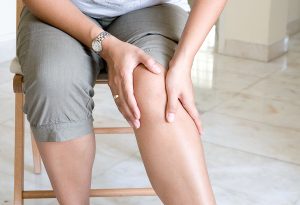Whether you’re recovering from a sports injury, car accident, or dealing with pain and loss of mobility due to a chronic health issue, you want to see improvements quickly. It’s important that you set realistic expectations with your rehabilitation, however. If you try to rush the process, you risk additional injuries or setbacks.
Premium Sports and Orthopedics is here to share with you what to expect during your rehabilitation. It’s impossible to state exact timelines, as it comes down to your exact situation, but these tips help you understand how to be realistic about the process.
Factors That Influence Your Rehabilitation Timeline
Rehabilitation isn’t a one-size-fits-all process. Every person is unique and experiences a timeline that considers the patient’s injury, overall health, age, weight, and many other factors. A physically fit young athlete will heal differently than an elderly patient who is overweight. Both will recover, but rehabilitation timelines differ.
These are the factors that play an integral role in your rehabilitation stages.
1. Your Age and Overall Health
As you get older, it takes longer for your body to heal. Cellular recovery isn’t the same as when you’re a kid or young adult. Some of this has to do with your health.
Six out of 10 Americans have at least one chronic health condition that can impact rehabilitation. The most common health issues are:
- Alzheimer’s
- Arthritis
- Cancer
- Diabetes
- Epilepsy
- Heart disease and stroke
- Obesity
From finding it hard to remember medical instructions and lacking energy to experiencing chronic joint pain to struggling to catch your breath, your health does play a part in the rehabilitation process. Age can also be a factor because the older you are, the more likely it is that you have at least one of these health issues.
Age alone isn’t the only factor. An older adult who eats a healthy diet may find rehabilitation easier than a younger adult who drinks energy drinks and eats processed food all day. The body needs crucial vitamins and minerals for cell repair and growth, and a diet of sugar and processed foods doesn’t help as much as a balanced diet of lean proteins, fiber-rich foods, complex carbs, fruits, vegetables, and calcium-rich choices.
2. The Severity of the Injury, Chronic Pain, or Health Issue
While there is no fixed timeline on how fast you’ll recover, there are general guidelines that help you understand what you might experience.
- Broken bones/fractures: It can take anywhere from six to 12 weeks to regain strength and mobility. It depends on the severity of the bone break and the repairs needed to mend the bones. Some people report lasting pain, especially in cold, damp weather. If you experience that, talk to the doctor for advice on what to do.
- Chronic pain management: For people with arthritis, there is no cure. Rehabilitation helps you regain as much movement as possible, and also helps you learn how to manage chronic pain. There is no average timeline as the chronic condition never goes away.
- Damaged or torn ligaments: The recovery depends on your health and severity of the injury. If surgery is needed, the recovery takes longer. For most people, it takes three to nine months to regain strength and range of motion.
- Neurological Conditions: Damage caused during a stroke, brain injury, dementia, or spinal cord injury is often ongoing. Rehabilitation can take several months or even years. You may never fully recover, but the more mobility, strength, and range of motion you regain, the easier your daily life is.
- Post-surgery rehabilitation: While the goal following an injury is to find non-surgical treatment options, sometimes, there is no choice but to undergo surgery. The recovery time can take up to a year, depending on the type of surgery. Laparoscopic surgeries lead to faster healing times. Rehabilitation usually takes six to 12 months.
- Strains/minor sprains: If you attend regular physical therapy sessions and work on your exercises at home, you could be fully healed within six weeks.
3. How Well You Follow Your Orthopedist’s or Physical Therapist’s Directions
Seeking expert care from a sports and orthopedics specialist before injuries worsen is important. When caught early, it’s easier to seek effective non-surgical injury treatments.
There’s also the power of positive thinking. If you start rehabilitation sessions with a negative outlook, it’s hard to remain motivated to do your best.
Once you know what exercises and movements are important to helping you retain strength, mobility, and range of motion, you need to practice them every day without fail. Workout for as long as the doctor says to. Don’t overexert, even if you feel capable. Don’t do more than recommended without first asking your rehabilitation team.
Attend all appointments. Even missing one appointment makes you less likely to return, and that defeats the purpose of rehabilitation. If you’re sick and cannot make it, talk to the doctor and get the appointment rescheduled ASAP. In the meantime, keep doing your exercises at home.
To remain positive, you need a strong support team. Your doctor and physical therapists are just one part of that team. You also need to surround yourself with friends and family who support you through the good and the bad.
4. California’s Rules on Rehabilitation Services
There’s one more thing to consider. Health insurance impacts your rehabilitation. Working with a medical team is necessary to get approval for physical therapy sessions that extend beyond insurance limits.
California medical laws allow people to receive 12 physical therapy visits or get physical therapy for no more than 45 days (whichever comes first) without a doctor’s referral. If you need more physical therapy than the limit allows, you must get a physician’s referral to continue. If you’re already working with a rehabilitation team, you’re set.
Is your injury job-related? If you were injured at work and need physical therapy, California’s workers’ compensation rules allow 24 visits with a physical therapist, occupational therapist, or chiropractor without having authorization from the claims adjuster assigned to your case. Your employer’s insurance pays for those visits. If you attend more rehabilitation appointments than the limits allow, you will have to pay for them.
Be Realistic About Your Recovery
Keep in mind that you need to have realistic expectations. You’re not going to heal overnight. While being realistic, remain positive about your outcome.
Ask questions as they arise. If you’re doing a recommended stretch and you feel snapping pains, stop and ask your doctor before proceeding. If you don’t feel you’re improving as fast as you’d want, talk to your doctor to get reassurance that you’re on the mend.
Don’t think about the final day of physical therapy. Instead, focus on your achievements to that point. Each day that you complete is another step towards your goal of healing and regaining strength, mobility, and range of motion.
You will go through plateaus where the gains seem minimal. This is normal and isn’t a sign that you’re not working hard enough.
Take care of yourself as you heal and regain strength. If you’re not eating as well as you could, take time to improve your diet. Get plenty of sleep as your body heals best when you’re sleeping.
If you find yourself feeling down, talk to a counselor. Anxiety and even depression are common after a serious injury. Physical therapy and rehabilitation help your body heal, but you might need to pair it with mental healing, too. Your sports and orthopedics doctor can help you find the best therapist for your needs.
Get Expert Advice From California’s Rehabilitation Specialists
For Californians, rehabilitation is a highly personal process where it’s difficult to predict the exact time needed. Don’t overlook the fact that your body needs the time it takes, and rushing it does no good.
Work with the medical experts at Premium Sports and Orthopedics to ensure you’re doing everything your joints, muscles, and bones need to heal correctly. What you don’t want is to take shortcuts that impede healing or lead to reinjuries.







